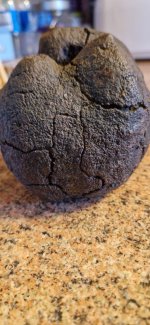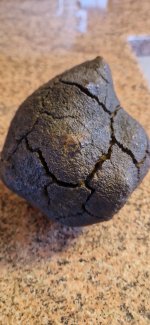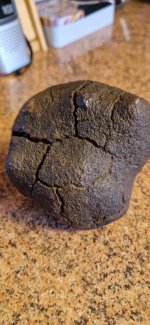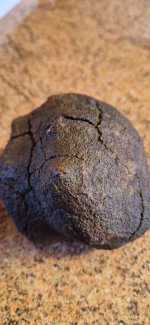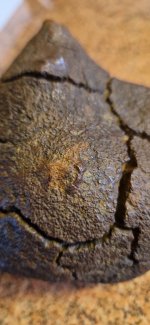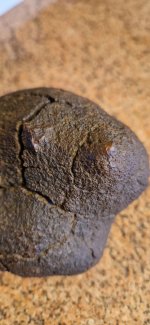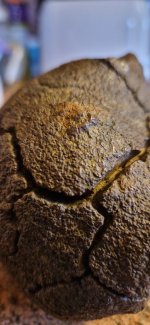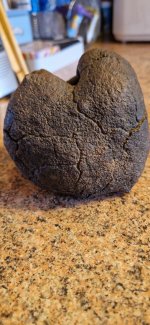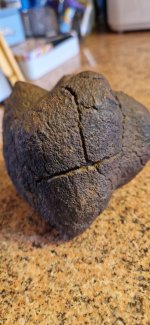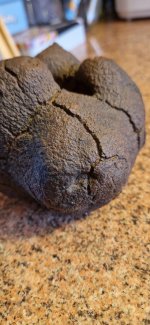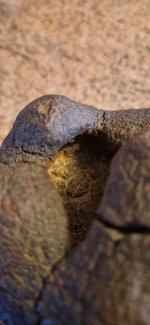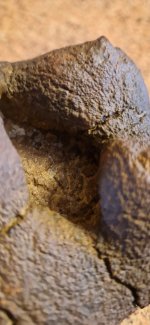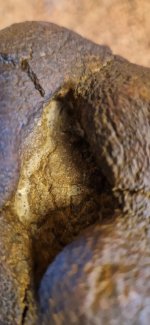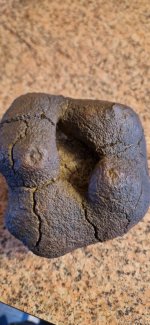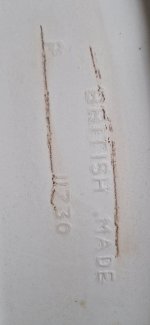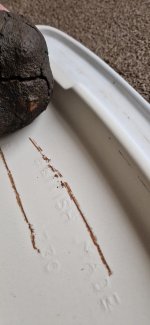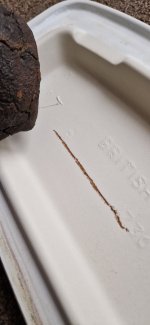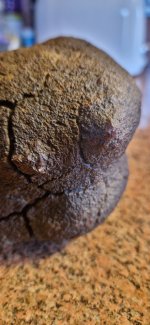stuart7
Jr. Member
- Sep 13, 2023
- 20
- 21
It's obviously a concretion, as the geologist you took it to told you.
300 million year old "lava bombs" don't look anything like your rock - even in Scotland.
When Pyrite masses decompose and oxidize (as they all do over time) they typically form iron oxide concretions (nodules) of Hematite and/or Magnetite with minor other iron minerals associated. Your pictures look very much like the other decomposed pyrite concretions that are found all over the world.
A streak test will tell you whether your concretion is composed of Hematite or Magnetite. A streak test will not confirm whether it's a meteorite or a lava bomb as those are rocks - not minerals.
